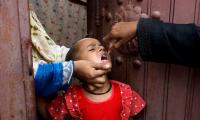World Children’s Day (November 20) is usually an understated affair in our country. And its motto ‘for every child, every right’ is hardly taken seriously by our leaders. This year was no exception.
That the country is not giving children their due rights is a truly worrisome situation. A raft of statistics makes this abundantly clear. They tell you how broken our approach is to raising our children and to our future. A case in point: one key doorway to progress, a good and free education system available to all, is closed to 22.8 million children; this is the world’s second highest number of out-of-school children. Another key doorway is nutrition. But more on this later.
First, a look at good practices in one school to raise children’s awareness of their rights that deserve attention: this year in Zoya Science Schools, the World Children’s Day celebrations revolved around their poster on children’s rights. Its centerpiece is the painting ‘Dance of Youth’ by Picasso.
The children replicate its upbeat spirit in their scribblings, capturing somewhat the optimism and energy of youth that burst out of Picasso’s painting.
Also, in the children’s rights poster are extracts from the UN Convention on the Rights of the Child, which bind member countries, including Pakistan, to remove infant and child mortality, ensure medical assistance and health care to all children, and combat disease and malnutrition by providing nutritious food, etc.
All this the children can recite by heart, that is, the lyrical version in their mother tongue Seraiki written by the popular people’s poet Nawab Muztar. It is a fine mnemonic effort to make children aware of their rights and to turn them into active agents in their education. Such activities have an elevating influence on children’s minds and should be adopted in all our schools.
But look beyond the merry-making and you see that it belies the reality of the children’s daily lives. And the reality is that the 3,000 or so underprivileged children studying in eight Zoya Science schools come from impoverished, hungry villages like Esseanwala, Morikhwala, etc.
The villages are located in far corners of south Punjab along River Indus. These are places dominated by large feudal haciendas and thick with peasants and landless workers deprived of justice.
Payment for work on the haciendas to the children’s families is a meagre Rs20 for every 40kg of sugarcane cut, which adds up to far less than the minimum monthly wage despite toiling in the field all day. Yet, during the sugarcane cutting season, which is now starting, the entire family works on the fields. And children drop out of school to do so.
Needless to say, child poverty, illiteracy and malnutrition are everyday experiences in these villages to which World Children’s Day draws attention, and our leaders neglect. The consequences of this neglect are regretful: statistics collected by the Zoya schools in a health survey of the children a few years ago tell you that more than half the children surveyed are seriously undernourished. That is 433 out of 847 children. Eighty-nine children are under-weight. Sixty-eight are both under-height and under-weight and face three times more risk of dying compared with normal children.
The malaise is widespread. The National Nutrition Survey says a fifth of all school-going boys and a tenth of girls in Pakistan are under-weight. And the Global Hunger Index places us in 99th position among 129 countries implying that we have a ‘serious severity of hunger.’
Hungry children are less likely to go to school, less likely to stay there and they struggle academically – you can’t expect them to properly work in class on an empty stomach! Hunger is the worst kind of violence. It is heaped with abundance on our children.
Surely the trend lines here predate recent governments, but they have not delivered any worthwhile results either. The irreversible damage that lasting hunger does on young children is still not sinking in. As a result, our children silently waste and wither as does our future.
The hopeful news is that providing better nutrition to the children is a strikingly good investment: it returns Rs16 for every rupee spent. Nothing else in the world’s development experience shows such high returns, which is made clear in the World Bank’s flagship publication on this issue ‘Repositioning Nutrition as Central to Development’.
It asks all countries to focus on “nutrition, and to fund nutrition investments much more heavily than has been the case in the past.” Indeed 125 countries have gone down this road. The report ‘School Meals Programs around the World’ of the Global Child Nutrition Foundation says school meals are the most widespread safety net in the world reaching 330 million children, including children in all South Asian countries except Pakistan.
And the cost of giving a daily meal to school children is not much. The report says, in South Asia it is about Rs57 per child daily. But the Zoya schools do it for even cheaper: for less than Rs10 they give a banana/apple or for Rs40 they give a glass of milk to all girls of prep and nursery in two schools. And a virtuous chain reaction is set in motion: girl’s enrollment sky-rockets; they come regularly to school and do not drop out of school, which are hopeful signs.
So, what can we learn from this catalog of misery, official neglect and hope? It is that millions of our hungry children, 3.4 million of whom are chronically hungry, is a serious humanitarian crisis which will worsen overtime. That neglecting our children is an enormous act of self-harm. Yet the official policy to help children is of deep neglect. But that shouldn’t last.
Key doorways to progress must be opened for every child. That giving children additional calories alleviates hunger and increases enrollment. That the expense of a national programme to give school meals to every child is not large. But the results will be dramatic.
The writer is a freelance contributor. He can be reached at: Khwaja.Sarmad@gmail.com
Studies have established that most effective interventions for improving quality of education is to train teachers
For Pakistan, 2025 must be year of decisive action and vision
Mpox is caused by monkeypox virus which belongs to family of viruses that includes smallpox virus as well
This digital shift represents profound change, but it also brings with it significant challenges
Benazir Bhutto, like Indra Gandhi in neighbouring India, did not have to start from scratch
Workplace therapy has tangible benefits like improving mental well-being as well as productivity







